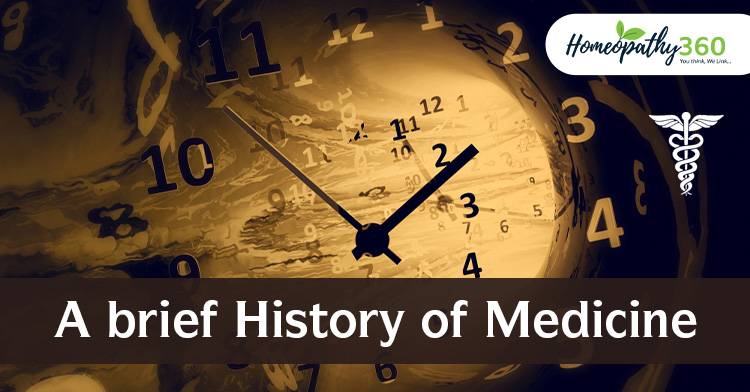
PRE HISTORIC MEDICINE (8000-5000 BC) :
The beginning of humanity and the history of medicine are interconnected. Only a few sketches and specimens that have survived from the stone era can be found in human storage as documentary writings and proofs of medicinal ideas. Medical professionals were referred to as “Magicians” throughout that time period. The portrait of an elderly doctor is most likely depicted in a drawing on the wall of the trois freres cave in the Pyrenees. had virtually little knowledge about medicine. was based on a combination of superstition, religion, magic, and witchcraft that included a god, bad spirits, stars, and planets. referred to as the sickness SUPERNATURAL THEORY. it was thought that the casts of nails, excretions, and hair would ward off evil spirits. They took care to bury such things as a result.TREPHENING was a prehistoric form of surgery that involved drilling a hole in the skull for epilepsy.
INDIAN MEDICINE BC 5000
Ayurvedic medicine is typically referred to as Indian medicine. The body of literature on the subject of medicine in India eventually grew under the label Ayur Veda, which means “Knowledge Life” in Sanskrit. The word “Ayurveda” denotes knowledge for a long life or wisdom of living. Veda is wisdom, the science of life, and aysh is life, or the principle of life.
RIG VEDA and ATHARVA VEDA (BC 5000) has spoken about important medicinal knowledge.
The ATHARMA VEDA outlined two systems.
1. Charms and sorcery; 2. Spiritual healing
based on empirical data, medications
The god of Ayurveda is regarded as being DHANVANTHARI. Bharadwaja was the first person to practise Ayurveda, and he was thought to have learned it directly from Indra. The first textbook description of Ayurveda was written by AGNIVESA in his work AGNIVESH TANTRA.Charaka brought this book back to life, and it later went by the name CHARAKA SAMHITHA. It is the biggest and most significant collection of Ayurveda knowledge. SUSRUTHA SAMHITHA, written by Susrutha circa 1000 BC, was another ancient scripture. The book is a pioneer in the field of Ayurvedic medicine and surgery. Susrutha was thought to be Dhanvanthari’s first student. The name Susrutha means “FATHER OF SURGERY.” The Susrutha Samhita has descriptions of obstetrics and ophthalmology. The textbooks utilised in NALANDA and THAKSHASILA were the Charaka Samhitha and the Susrutha Samhitha.
HOLISTIC APPROACH was used. School of surgeons followed DHANVANTHARI SAMPRADAYA, whereas school of physicians followed ATHREYA SAMPRADAYA. Ayurveda employed several surgical devices and thousands of diagnostic words.
Treatment can be done in two ways: 1. Vipareetha Chikitsa-Hethu vipareetha
Hethu-vyadhi vipareetha, or “vyadhi vipareetha,
2.Tadhartheekari Chikitsa Hethu-tadhartheekari vyadhi Tadhartheekari Tadhartheekari
Ayurveda was promoted as the official state medicine by King Ashoka, who also founded medical institutions and free clinics. Between 800 BC and 600 AD, Indian medicine saw its heyday. Lack of state backing during the Mughal era contributed to the demise of ayurveda.
CHINESE MEDICINE BC 3500-500
Eastern medicine Even now, the native Chinese have a high regard for and adherence to the Chinese medical system. The father of Chinese medicine is the emperor “Shen Nong” (3000 B.C.). Famous medical figures include “Huatu” (115-205 A.D.) and “Chang Chung” monarch (195 A.D.).
this system’s. The “Yin and Yang” hypothesis is central to Chinese medicine. This theory holds that health is a state of equilibrium between the “Yin” and “Yang” forces found in nature. The forces of “Yin” and “Yang” are opposite each other. In a healthy body, the life energy known as “Qi” (pronounce “chi”) will flow harmoniously and continuously through several imagined channels.
Treatments such as Acupanture, Hydrotherapy, Massage, and Moxubation can help clear blocked meridians and prevent diseases.
EGYPTIAN MEDICINE BC 3300-1000
Egyptian medicine reached its peak in the days of IMHOTEP, who was both a doctor and divinity. Horus was considered the god of health and he lost one of his eyes in a fight with Set. Egyptians believed in life after death and developed the technique of mummifying the dead bodies. Hammurabi developed a code of medical ethics and identified mosquitoes and rats as vectors of diseases.
GREEK MEDICINE: BC 500-100
Aesculapius or Asclepius was a remarkable medical personality of Greek medical system and later became the Roman God of Medicine. He was located in Epidaurus and carried a staff with a snake wrapped around it, symbolizing the physician’s journey to high destiny. Hippocrates was the first person to state that diseases can be treated with medicines and rejected the superstition and “magic” of primitive medicine. He focused medical practice on the natural approach and treatment of diseases, highlighting the importance of understanding the patient’s health, independence of mind, and the need for harmony between the individual, social and natural environment.
ROMAN MEDICINE –BC 300-200
Romans adopted the theory of the four humors from the Greeks, which remained popular in Europe until the 17th century. They borrowed medicine from the Greeks and were more practical minded than the Greeks. Their religion consisted mainly in the worship of Mars, who was an agricultural divinity but later became god of war and health. Apollo and Mars were ancient protectors of health, while Aesculapius assumed a similar role. Romans also gave importance to sanitation, water supply, sewage systems, and hospitals for sick people.
RENAISSANCE PERIOD AD 1300-1500
begins on the day when Christopher Columbus first set foot on American soil. By the sixteenth century, individuals in Europe had begun to recognise the value of scientific inquiry. The qualities of every material in our universe may be analysed under two categories, according to Galileo Galli. The primary, or quantitative, investigation comes first. For instance, consider size, consistency, height, and weight. The study of secondary or qualitative research is the second. For instance, colour, smell, taste, etc. Therefore, only the examination of both qualitative and quantitative properties may fully complete the research of a material.
Because it’s challenging to gauge drug quality, they forgot to investigate it.
Even biologists began to hold the material (body) to be the only source of reality.
Medical revolution intensified. study of anatomy and body dissection. belief that the physical world is the only source of reality. discovery of the thermometer, blood circulation, and microscope.
18TH and 19th CENTURY MEDICINE
nineteenth-century medicine Beginning in the early 18th century, under the rule of the church, Europe as a whole was rife with ideas and hypotheses concerning the origins and progression of illnesses. Different sets of ideas were formed among physicians. Each and every tribe developed its own ideas to describe the nature and origin of illness.
The church lost its ability to exert control. Medical professionals frequently employed cruel treatment techniques. scientific advancements in anatomy and physiology. Dogmatists, empiricists, and Methodists made up the three main groupings of physicians.
1-the reductionist conception replaced the holistic one as scientific discoveries of organs and functions
2-Sanitation, hydration, and preventative drugs
THERAPY WITH 3 SERUM
4-BACTERIOLOGY
5-SPECIFIC DISEASE CAUSES
6.dental surgery
7. cellular pathology
8-AUTOPSY by ANTONIO BENEVEINI, THE FATHER OF PATHOLOGICAL ANATOMY
THE FATHER OF MODERN PATHOLOGY: XAVIER BICHAT’s “MODERN PATHOLOGY,” No.
9.JULIUS COHNEIM, THE FATHER OF EXPERIMENTAL PATHOLOGY, is the author of
10 Experimental Pathology.
11-IMMUNOLOGY
12-INFLAMMATION
13-ANTIBODIES
14-ANAPHYLAXIS
15. SENSITIVITY TO CONTACT AND DELAYED HYPERSENSITIVITY
MEDICINE IN 20TH CENTURY
The 20th century saw the most advancements and discoveries. Germ theory was established, and the discovery of leucocytes gave rise to immunology.
Many diseases that were common and serious before filterable viruses were discovered were eliminated thanks to vaccination and the development of antisera. Viruses that cause viral meningitis, smallpox, yellow fever, typhus, measles, polio, and other diseases were identified.
MEDICINE IN 21ST CENTURY
Advances in nanotechnology, gene therapy, stem cell treatments, and advanced diagnostics
References
1.Sarkar, B.K. Organon of medicine. (14 Ed.). Delhi: Birla publications; 2013-2014.
2.Nagendra babu, G. Comprehensive study of organon. (1 Ed.). Noida,up : Bjain publishers; 2009
3.Banerjee,D.D. History of medicine B. Jain Publishers, 2003




